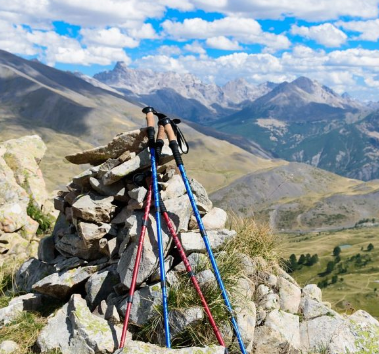
It is a basic image to see serious hikers tackling terrain with sticks which seems like they are on their way to a ski resort. Trekking poles are becoming more and more an indication of being a serious hiker who is prepared for any challenge ahead. Are trekking poles a must-have necessity or merely an addition to an image portrayed?
What Is the Purpose of Trekking Poles?
Scientific research brought us the following proof. Poles are beneficial in reducing the strain on your joints, especially in the lower joints, allowing you to go further. It is useful in reducing muscle pain the next day due to better muscle functionality. Despite the initial irritation that they may cause due to not being used to walking with them, it seems they are more than just an appearance piece once you get your arms and legs to operate in the correct rhythm.
They prevent your hands from getting cold when walking in cold weather due to better circulation from your arms working as well. They support the weight of your backpack, allowing you to carry more. They provide support during river crossings or rough terrain, and they help you to keep your balance better. In conclusion, they support your entire body and slows down the process of getting tired.
What to Consider When Buying Trekking Poles?
Seeming to be vital on your hike, here are a few pointers to consider when buying your first pair of poles. Consider the weight of your poles. Lighter poles are more comfortable to move forward. The importance of the pole is determined by the material used, which then, in turn, influence the price as well.
If you are only hiking by occasion, an aluminium pole should be beautiful while regular hikers would benefit from paying that extra bit more for carbon fibre poles. A second determining factor would be how small your poles can fold up. The more sections a pole has, the more compact it can be stored away hanging to your backpack on sections that you don’t feel that you need it.
Also, essential to consider is the built-in system for expansion. You want it to be quick and easy, yet sturdy and stable. A push-in and lock system is probably the most secure option for you to settle for, providing sturdy support when pressing down on it. The handle is another vital part of the pole. You are using the handle to transfer power and weight and need a handle which is softer on your hands with some flexibility like foam or cork. Plastic handles aren’t only heavy, they also don’t absorb your sweat, and they heat up quickly.
The wrist loop on your poles is there to prevent you from losing the poles and also, they help with the support of your grip. Bigger circles are in general considered to be better. This will not necessarily depend on better or worse, but much sooner on the frequency of being used as well as the terrain you are taking on.

